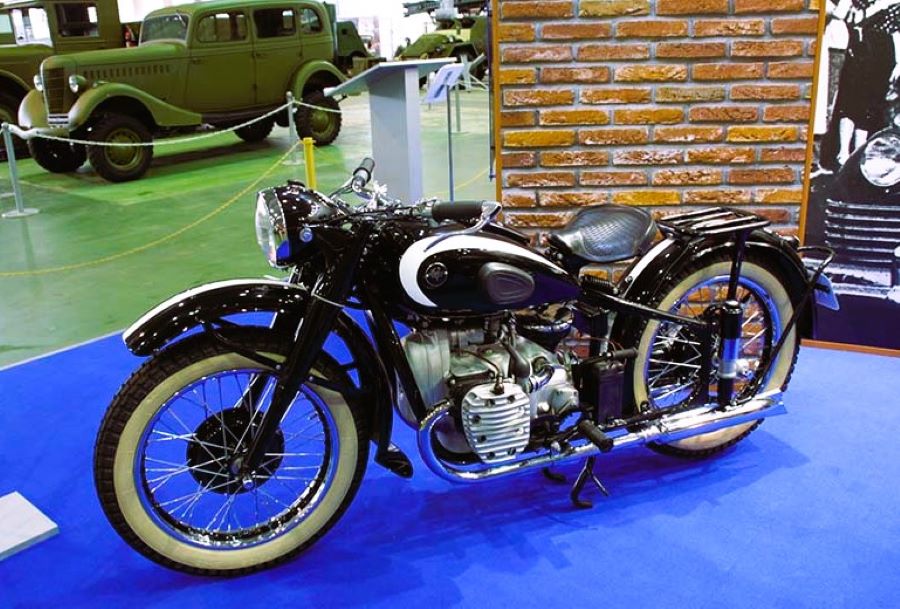The history of the honorary escort of the USSR began in 1955, when the First Secretary of the Central Committee of the CPSU N.S. Khrushchev instructed the commandant of the Moscow Kremlin A.Y. Vedenin to create a motorcycle platoon for the solemn escort of government guests. Shortly before that, Khrushchev visited Yugoslavia, and he really liked the meeting organized there with the participation of motorcycle escorts.
The choice fell on the M-72 produced by the Kiev Motorcycle Plant (KMZ, Ukraine), which became the official supplier of the 9th Directorate of the KGB of the USSR for almost four decades. The first escort motorcycles, judging by the surviving photographs, belonged to different factory batches produced in 1955-56, as evidenced, for example, by two types of yokes for fastening the folding part of the rear wing. These machines differed from the usual serial ones primarily in a special black and white color and a large number of chrome parts (including wheel rims, rear suspension shock absorber cups and air filter covers). Practically the only “special equipment” was the electric warning sound signals on the head motorcycle.
The baptism of fire of the motorcycle platoon of the Separate Special Forces Regiment of the Moscow Kremlin Commandant’s Office (OPSN UKMK), as the motorcycle unit of the honorary escort was officially called, was the visit of the President of Yugoslavia Josip Broz Tito to the USSR in the summer of 1956.
At the end of the 50s, tyres with white-painted sidewalls appeared on escort M-72s. At the same time, shields were installed to cover the driver’s knees. In photographs taken in the winter of 1959, for the first time, you can see windshields of the same type that were later used on the K-750. In winter snows, escort motorcycles were operated with sidecars. This practice has survived to this day.
Over the years other developments were trialed on the new model K-750 that superseded the M-72, featuring swinging arm rear suspension, short-lever front forks, the difference was more in the configuration, quality of workmanship and assembly. They received a softer “sagging” suspension, a “high-speed” pair in the final drive and a folding side stand. Some were equipped with rear-view mirrors, horns and warning lamps and a VHF radio station.
Then followed K-750M (since 1967) and K-650 (since 1968) models. The first differed from the K-750 in a telescopic fork, unified with the Ural motorcycles produced by IMZ in Russia, and wheel hubs with labyrinth seals. And on the K-650, almost in the same chassis there was a new MT-8 overhead valve engine. According to the memoirs of veterans, the K-650 proved to be better than previous models: it did not have a tendency to overheat, and the characteristic of high capacity overhead-valve engines. Therefore, the riders themselves made a replacement, rearranging the MT-750M engine in the chassis of the K-650.
A rather problematic unit turned out to be a new automatic ignition timing system as introduced on Urals. its reliability was considered unsatisfactory, and the honorary escort until 1979 received motorcycles with manual ignition timing. This unreliable automatic advance ignition unit has famously become known worldwide as “the mixing bowl of doom”.
Further development of Eskorts was carried out. You will find more information elsewhere in these pages.
source: oppozit, bcozz archives, JD

